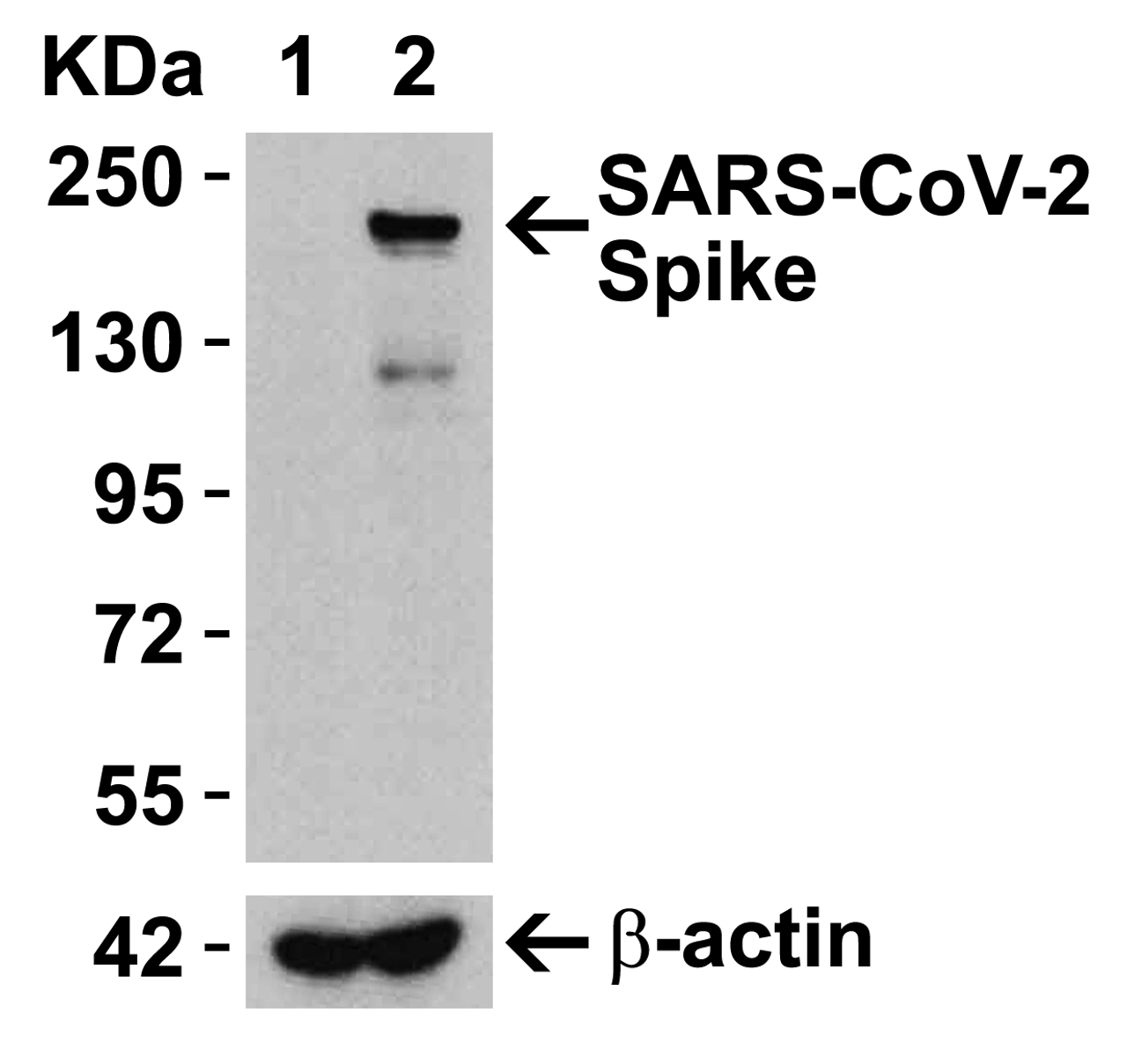Product Description
SARS-CoV-2 (COVID-19) Spike Antibody (cleavage site) | 9095 | ProSci
Host: Rabbit
Reactivity: Virus
Homology: Predicted reactivity based on immunogen sequence: SARS-CoV Spike proteins: (15%)
Immunogen: Anti-SARS-CoV-2 (COVID-19) Spike Antibody (cleavage site) (9095) was raised against a peptide corresponding to 13 amino acids near the center of SARS-CoV-2 (COVID-19) Spike glycoprotein.
The immunogen is located within 650-700 amino acids of SARS-CoV-2 (COVID-19) Spike protein.
Research Area: Infectious Disease, COVID-19
Tested Application: E, WB, IF
Application: WB: 2.5-5 μg/mL; IF: 20 μg/mL.
Antibody validated: Western Blot in human samples; Immunofluorescence in human samples. SARS-CoV-2 (COVID-19) Spike Antibody (cleavage site) can be used for the detection of SARS-CoV-2 (COVID-19) Spike protein in ELISA. It will detect 4 ng of free peptide at 1 μg/mL. All other applications and species not yet tested.
Specificiy: N/A
Positive Control 1: N/A
Positive Control 2: N/A
Positive Control 3: N/A
Positive Control 4: N/A
Positive Control 5: N/A
Positive Control 6: N/A
Molecular Weight: N/A
Validation: N/A
Isoform: SARS-CoV-2 (COVID-19) Spike has one isoform (1273aa) .
Purification: SARS-CoV-2 (COVID-19) Spike Antibody (cleavage site) is affinity chromatography purified via peptide column.
Clonality: Polyclonal
Clone: N/A
Isotype: IgG
Conjugate: Unconjugated
Physical State: Liquid
Buffer: SARS-CoV-2 (COVID-19) Spike Antibody (cleavage site) is supplied in PBS containing 0.02% sodium azide.
Concentration: 1 mg/mL
Storage Condition: SARS-CoV-2 (COVID-19) Spike antibody (cleavage site) can be stored at 4˚C for three months and -20˚C, stable for up to one year. As with all antibodies care should be taken to avoid repeated freeze thaw cycles. Antibodies should not be exposed to prolonged high temperatures.
Alternate Name: SARS-CoV-2 (COVID-19) Spike Antibody (cleavage site) : Severe acute respiratory syndrome coronavirus 2 (SARS-CoV-2) , Surface Glycoprotein, Spike protein
User Note: Optimal dilutions for each application to be determined by the researcher.
BACKGROUND: Coronavirus disease 2019 (COVID-19) , formerly known as 2019-nCoV acute respiratory disease, is an infectious disease caused by SARS-CoV-2, a virus closely related to the SARS virus (1) . The disease is the cause of the 2019–20 coronavirus outbreak (2) . The structure of 2019-nCoV consists of the following: a Spike protein (S) , hemagglutinin-esterease dimer (HE) , a membrane glycoprotein (M) , an envelope protein (E) a nucleoclapid protein (N) and RNA. Coronavirus invades cells through Spike (S) glycoproteins, a class I fusion protein. It is the major viral surface protein that coronavirus uses to bind to the human cell surface receptor. It also mediates the fusion of host and viral cell membrane, allowing the virus to enter human cells and begin infection (3) . The spike protein is the major target for neutralizing antibodies and vaccine development (4) . The protein modeling suggests that there is strong interaction between Spike protein receptor-binding domain and its host receptor angiotensin-converting enzyme 2 (ACE2) , which regulate both the cross-species and human-to-human transmissions of COVID-19 (5) . The recent study has shown that the SARS-CoV-2 spike protein binds ACE2 with higher affinity than SARS-CoV spike protein (6) .
 Euro
Euro
 USD
USD
 British Pound
British Pound
 NULL
NULL












